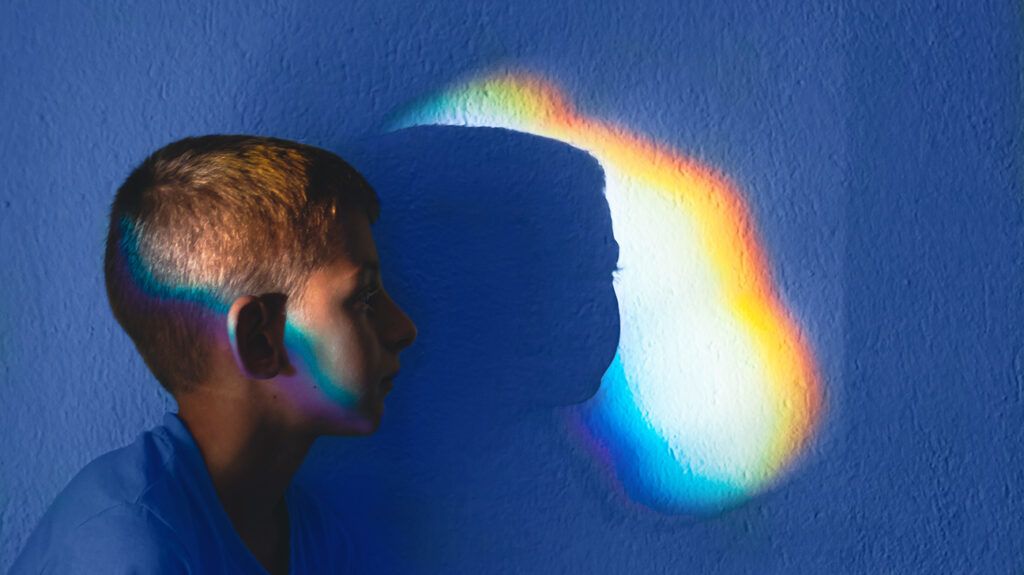Childhood is not always — or even usually — carefree. Depression among kids is common and can be serious, but it is treatable.

It’s natural for children to have tears and fears. But if persistent sadness overtakes your child’s interests and relationships, depression could be a cause.
Depression won’t disappear with a new toy, better grade, or winning a game. But it can be managed with therapy, healthy routines, and medication.
Knowing the symptoms and causes of childhood depression can help you respond effectively.
Depression among youth is on the rise.
In 2021, a
Researchers suggest that although childhood depression is nothing new, the pandemic has nearly doubled its rates because of social distancing, health losses, and remote learning.
Study authors emphasize that during the pandemic, kids have endured significant disruptions in their everyday lives, including:
- ongoing social isolation
- missed milestones
- increased family stress
- decreased peer interaction
Researchers say these are “all potential precipitants of psychological distress and mental health difficulties in youth.”
The review also suggested girls show higher rates of depression than boys.
Vulnerable social groups
Racism, discrimination, and increased exposure to violence may cause some marginalized groups to experience more depression than others.
Reviewers of the
One
Cross-sectional study authors note their research was limited by overrepresenting white, financially well-off young people with higher levels of parent education.
More research is needed across racial, socioeconomic, and gender-diverse groups to better understand childhood depression for diverse individuals.
Often childhood depression is misidentified as laziness by caregivers or
Whereas the primary symptom of depression for adults is a low mood, in children and teens, the primary symptom can present as an irritable mood, according to the Diagnostic and Statistical Manual of Mental Disorders, 5th ed. (DSM-5).
In addition to irritability, symptoms seen in children may include:
- signs mistaken for laziness, such as:
- disinterest in play, friends, or activities they usually enjoy
- missed school; dropping grades
- lack of energy
- difficulty with focus
- sleeping way more or way less than typical for them
- eating more or less than usual
(you may notice at annual physicals they don’t meet expected weight gain)
- signs mistaken for behavioral disorders, such as:
- irritability
- friendship problems
- chronic sadness and crying
- persistent stomachaches and headaches
- expressing thoughts of suicide or self-harm
Are you in crisis?
The
- Call the National Suicide Prevention Lifeline 24 hours a day at 800-273-8255.
- Text “HOME” to the Crisis Text Line at 741741.
Here’s how to address signs of suicidal behavior in children and teens.
No one factor causes depression in kids.
Contributing factors include:
- childhood trauma
- loss of friend or family member
- other stressful life events
- medical illness or co-ocurring mental health condition
- environmental stressors or inequities such as poverty or food insecurity
- substance misuse
- genetics
A note on genetic predispositions
Your genes play a role in whether you will develop some mental or physical health conditions, but they’re only one piece of the puzzle.
In some cases, it’s possible to decrease the likelihood of your child experiencing social stressors that can influence depression. The CDC offers resources to address youth:
Depression can cause changes in the brain. Untreated, these changes can have long lasting effects, including a greater chance of experiencing adult depression, as well as:
- poor school performance, potentially limiting access to higher education opportunities
- decreased social functioning
- increased levels of anxiety
- higher chance of substance misuse
- increased risk of suicide
If you suspect your child has depression, the more support you can get early on, the less likely depression will have long lasting effects.
A pediatrician will likely be your first point of contact for depression screening and diagnosis.
A diagnosis requires symptoms to be experienced most of the day, nearly every day, for no less than 2 weeks.
Your child’s doctor will also likely want to rule out other medical conditions, such as:
- hypothyroidism, which can affect weight
- anemia
- vitamin D deficiency
- undiagnosed ADHD
If symptoms can’t be attributed to another medical condition, your primary care physician will likely refer your child to a social worker, pediatric psychologist, or psychiatrist.
A pediatric psychologist or psychiatrist will work with you to establish a treatment plan, such as one of the following:
Therapy or counseling
Psychotherapy is also called talk therapy. The clinician can help your child explore the experiences and feelings that may be contributing to depression. Psychotherapy has been shown to influence positive, long-term changes in the brain.
Cognitive behavioral therapy (CBT) can be helpful to identify thought patterns and perspectives that influence depression. Your child could learn new coping skills.
Play therapy uses the kid’s imagination to explore thoughts or feelings they might not express outwardly.
Online therapy may work best for you and your child’s schedule, among other reasons. Effective online child therapy programs will require parental consent and participation.
Medication
For moderate or severe depression, antidepressant medications may be recommended.
Dr. Richa Bhatia, a psychiatrist in Santa Rosa, California, gives the following pointers:
- selective serotonin reuptake inhibitors (SSRIs) could be effective with some children
- these medications need to be closely monitored by the prescribing physician, as there’s some risk of increased suicidal thoughts
- it’s important you and your child’s psychiatrist discuss whether the risk of depression outweighs the risk of medication
As a caretaker, you won’t be able to “fix” your child’s depression; however, you play a significant role in facilitating treatment.
Emotional support
You may choose to offer your child emotional support by:
- Asking gentle questions about their feelings and being an active listener
- Showing interest in their day-to-day, especially when something makes them happy
- Validating their feelings and letting them know it’s common to get help for big feelings
Practical support
Fostering healthy habits may help supplement professional interventions. You can:
- encourage nutrition and exercise
- model mindful journaling and meditation
- establish and maintain regular sleep schedules
- behavioral activation, which is initiating a behavior you usually find enjoyable,
regardless of your feelings at the moment
Social support
This 2019 review of childhood depression studies notes that relationships with peers have been shown to reduce depression in at-risk children. You may wish to:
- inform schoolteachers and counselors that your child is in need of greater support at the moment
- get involved with parent support groups
- encourage supportive friendships if your child shows interest
While facilitating treatment for your child, it may benefit you to ensure that you’re getting support, too. The National Alliance on Mental Illness (NAMI) can connect you with other parents who understand what you’re going through.
With treatment, depression often lifts. New ways of coping can help enrich your child’s life now and in the future.
